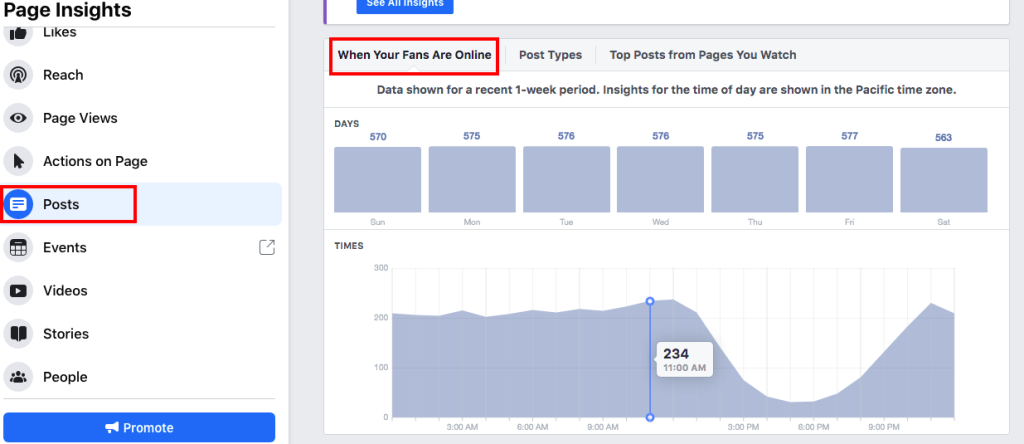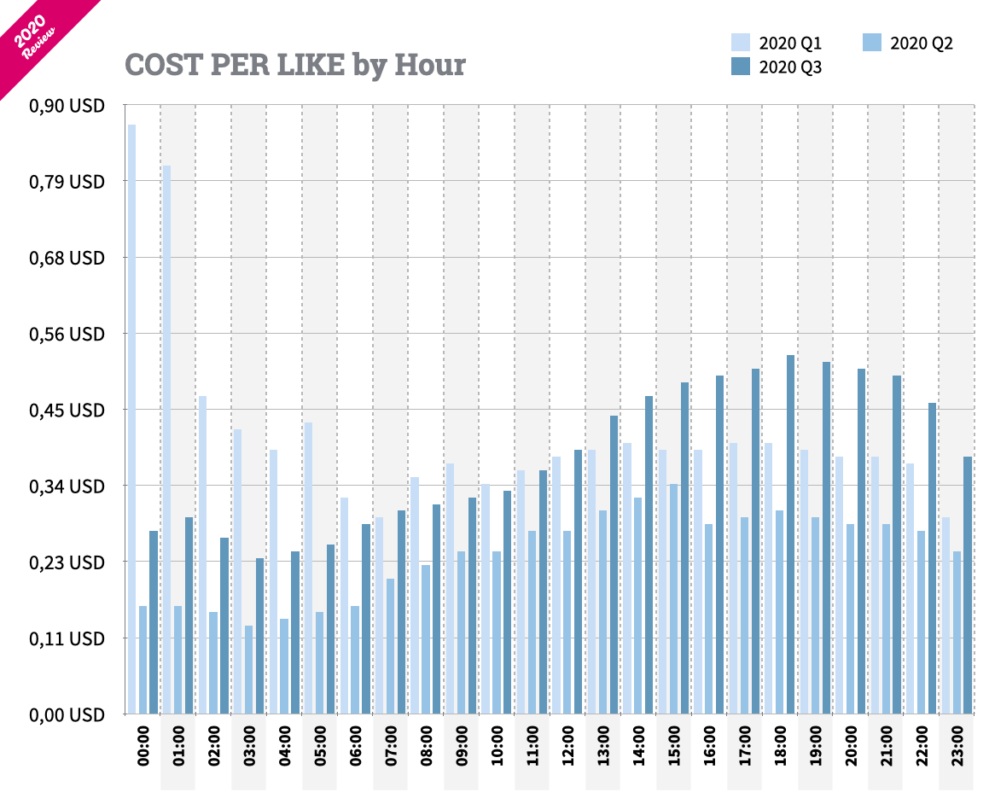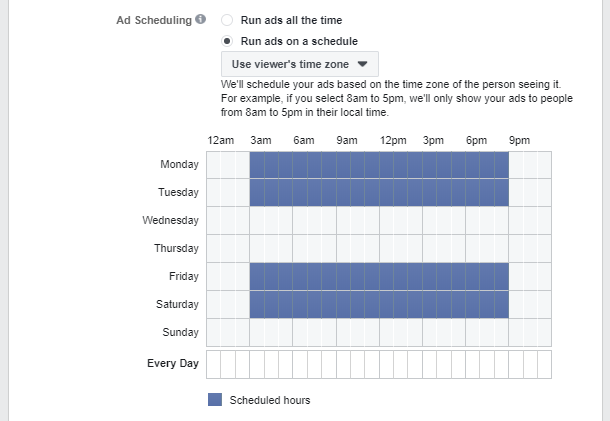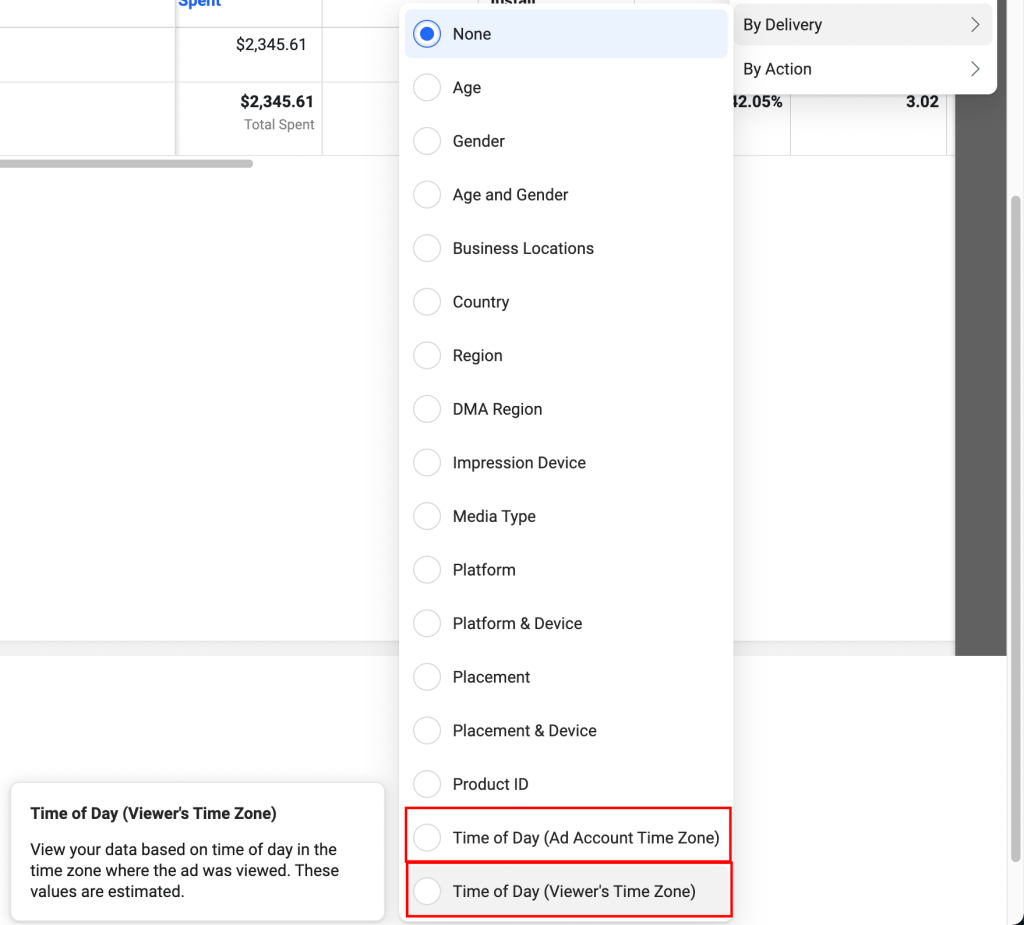Introduction: The Impact of Timing on Facebook Ad Performance
Have you ever felt like your Facebook ads are just not hitting the mark, despite your best efforts? You’ve crafted the perfect message and targeted the ideal audience, but the clicks and conversions are nowhere to be found. The issue may lie in the timing of your ads. Believe it or not, when your ad appears in the feed can play a huge role in its performance.
In this post, we will explore how the timing of your Facebook ads impacts their reach, engagement, and conversions. We’ll delve into the best times to run Facebook ads to help you connect with your audience when they are most active and likely to engage with your content.
Understanding the Facebook Ad Algorithm: How It Determines Ad Placement
Facebook’s algorithm is at the heart of how ads are served to users, influencing which content appears in their feed. The algorithm doesn’t just rely on the timing of ads—it also factors in user behavior, content relevance, and engagement signals. Here’s a breakdown of how the Facebook algorithm works and how it can help you optimize your ad performance by understanding what it prioritizes.

How Facebook's Algorithm Prioritizes Content
Facebook evaluates multiple factors before displaying any content to a user. By understanding these factors, you can strategically plan when to post your ads for maximum visibility.
Content Inventory
Facebook first considers the wide array of content available to a user. This inventory includes posts from friends and family, groups the user has joined, and pages they follow.
-
-
Posts from friends and family tend to take priority because they are seen as the most relevant and personal.
-
Pages they follow also matter, but they are generally ranked lower in the feed. Therefore, your ad might not be shown unless it has high engagement or fits the user’s interests.
-
Additionally, suggested content is included in the mix—Facebook introduces content that it predicts the user will engage with, even if they haven't directly interacted with that content creator before.
-
Signals
Facebook uses several engagement "signals" to assess the relevance of content. These signals help determine how likely a user is to engage with your ad.
-
-
Engagement history plays a crucial role—if a user frequently likes or comments on your posts, Facebook will prioritize showing them your future content.
-
The content type is also important; visual content such as images or videos typically engages users more than plain text posts. This means that ads featuring videos or compelling images are more likely to appear in feeds.
-
The source of the content is another signal—content from family and friends tends to be prioritized over posts from brands or businesses. However, if your content is highly relevant, it can break through this barrier.
-
Timeliness is crucial—recent content is favored over older content. Ads that are timely and align with current trends or events have a better chance of appearing at the top of the feed.
-
Predictions
The algorithm doesn’t just look at past interactions—it also predicts how likely you are to engage with specific content.
-
-
Facebook uses past behavior to gauge the engagement potential of a piece of content. For instance, if you've liked similar ads in the past, Facebook may predict that you’ll engage with the current ad too.
-
The engagement signals from your interactions with the platform, such as how much time you spend on a post, help Facebook predict how much attention the ad will garner.
-
Relevance Score
Every piece of content is assigned a relevance score, which determines its visibility. Content with a high relevance score is shown more often and to more people.
-
-
Ads that consistently generate high engagement (likes, comments, shares) receive better scores and are shown more frequently, giving them a better chance of reaching more users.
-
On the other hand, ads with lower engagement or perceived relevance may receive lower scores, reducing their visibility in the feed.
-
By understanding how Facebook’s algorithm works, you can tailor your ad strategies to ensure that your content is delivered at the right time and under the right conditions to maximize its effectiveness.
Key Elements That Affect the Timing of Facebook Ads: Understanding What Impacts Your Ad Schedule
When it comes to running successful Facebook ads, timing is critical. However, it’s not just about when you choose to post your ads—it’s also about various factors that influence how well your ads perform. Understanding these factors is key to scheduling your campaigns effectively. Let’s explore the most important elements that can affect your Facebook ad timing.
1. Industry-Specific Trends and Audience Behavior
Different industries have varying optimal times for ad placement. Understanding your industry and the behaviors of your target audience is crucial for scheduling your ads.

-
B2B (Business-to-Business) industries, for example, tend to see better engagement during weekdays, especially during work hours (9 AM - 5 PM). This is when professionals are most likely to be active on Facebook during breaks, lunchtime, or after work.
-
B2C (Business-to-Consumer) brands might see higher engagement in the evenings or weekends, when consumers are more likely to relax and browse through social media.
-
Industry-specific timing preferences are important to recognize, as these can help you better connect with your audience. Conducting research into the browsing habits of your target market can lead to more informed decisions on when to run your ads.
2. Campaign Goals and Desired Outcomes
The goal of your Facebook campaign will impact the ideal time to run your ads. Whether you’re seeking brand awareness, website traffic, or conversions will determine the most effective ad schedule for your objectives.
-
Brand awareness campaigns generally allow for more flexibility in scheduling since they’re designed to reach as many users as possible over time. These ads can be run at various times throughout the day or week.
-
Conversion-focused campaigns, on the other hand, require more strategic ad scheduling. These ads are aimed at getting users to take specific actions—such as making a purchase or signing up for a service. To optimize for conversions, you’ll want to run these ads at times when your audience is more likely to engage and take action.
-
Traffic campaigns can also benefit from peak times when users are most likely to click on links, whether during lunch breaks, evening browsing, or specific events.
3. Understanding User Behavior on Facebook
Facebook users have different engagement patterns depending on the time of day, season, and their personal routines. By understanding these behavior patterns, you can schedule your ads to align with times when users are most likely to engage.
-
Frequency of usage is another aspect to consider—while some users may check Facebook multiple times throughout the day, others might have longer, more focused browsing sessions. Scheduling ads around peak times for your specific audience can help increase visibility and engagement.
-
Interaction and engagement also vary depending on the day of the week. For instance, people may be more likely to engage with content on weekends when they have more free time.
-
Users typically interact with Facebook for different reasons, such as staying connected with family, catching up on news, or finding entertainment. Understanding these motivations will help you choose when to post ads that align with user activities.
4. Time Zones and Global Reach
If your target audience spans multiple time zones, you need to adjust your ad schedule accordingly to ensure maximum exposure.
-
If you are targeting international audiences, you may want to stagger your ad placements to accommodate peak times in different regions. Tools like Facebook Ads Manager allow you to schedule ads for different time zones, ensuring that your ads are running when your target audience is most likely to see them.
-
Local businesses can target specific time frames for ads, based on the local time zone and user habits, whereas global brands must consider the time difference to ensure their ads are reaching potential customers during their peak browsing times.
By considering these factors—industry behavior, campaign objectives, user interaction patterns, and time zones—you can fine-tune your Facebook ad schedule to get the best results.
Determining the Best Time to Run Ads on Facebook for Your Business Success
When it comes to Facebook ads, timing is everything. Understanding when to run your ads is just as important as targeting the right audience or crafting compelling ad copy.

There is no universal "best time" for every business, but by analyzing key factors, you can identify the ideal moments to schedule your campaigns. Let’s dive into what you need to consider to find the best time to run your Facebook ads and maximize your ad performance.
1. Weekdays vs. Weekends: Tailoring Your Ads Based on User Activity
It’s important to know that user behavior on Facebook changes based on the day of the week.
-
Weekdays: People are typically more active on Facebook during their breaks or commute hours. Professionals may scroll through social media during lunch breaks, or after working hours. Ads running on weekdays can be effective for business-related campaigns or for services that appeal to a more professional audience.
-
Weekends: Facebook usage tends to peak during weekends, as users have more free time to relax and engage with content. If your business targets consumers looking for entertainment, leisure, or weekend deals, weekends may be the best time to run your ads.
-
Consider your audience: If you’re targeting a specific demographic—like parents or students—consider when they are most likely to be online. Parents might engage with content during early mornings, after their kids go to school, or after they’ve put their kids to bed in the evening.
2. Time of Day: Capitalizing on Peak Engagement Hours
Knowing the time of day when your target audience is most likely to be active on Facebook can significantly improve your ad performance.
-
Morning Rush (6 AM - 9 AM): Early mornings are a good time to reach people who check their phones as soon as they wake up or during their commute to work. This time slot works well for ads that require quick attention or for companies that offer morning services like breakfast delivery or news updates.
-
Lunchtime Surge (12 PM - 2 PM): During lunch breaks, users are more likely to browse Facebook while taking a break from work. Ads posted during this time can attract people who have time to engage with content. This is a prime opportunity for brands targeting professionals, B2B products, or even lunch deals for restaurants.
-
Evening Relaxation (6 PM - 9 PM): After work hours, Facebook users are winding down and engaging with social media for entertainment. This is often when people engage with fun, lighthearted content, such as product promotions, influencer ads, and brand-sponsored entertainment.
-
Late Night Browsing (10 PM - 12 AM): Late-night browsing is common for people who relax before bed or those working on night shifts. While this may not be ideal for all businesses, if you’re targeting users in specific time zones or younger audiences, it can be a viable option.
3. Audience Demographics and Behavior Patterns
To determine the best time to run ads, consider the unique behavioral patterns and preferences of your target audience.
-
Age Group: Younger users (18-34) may be more active during late-night hours, while older demographics (35+) may be more likely to engage during the daytime or early evening.
-
Location: Users in urban areas might engage more during work breaks or commuting hours, while rural or suburban audiences might be more active in the evenings or weekends.
-
Lifestyle and Occupation: Targeting students, parents, or working professionals? Each group will have different peak engagement times. Parents may check Facebook after their kids’ bedtime, while students might browse in the late evening or on weekends.
4. Test and Optimize: Running A/B Tests for Better Results
The best time to run Facebook ads is not a one-size-fits-all strategy—it varies based on your audience and business. To truly uncover the optimal times for your specific campaigns, it’s essential to run tests.
-
A/B Testing: Use Facebook’s A/B testing feature to test ads at different times of the day and week. By comparing the results (engagement, clicks, conversions), you can refine your ad schedule based on real data, ensuring your ads run during the most effective hours.
-
Optimize Based on Analytics: Facebook’s Analytics and Insights tools provide valuable information about your audience’s behavior. Review performance data regularly to see when users are most active and engaged with your content. This can help you fine-tune your ad scheduling over time to improve results.
By leveraging these strategies and continuously testing and optimizing, you can determine the best times to run your ads on Facebook, ensuring your content reaches the right audience at the right moment.
How to Set Up an Effective Facebook Ads Schedule
Once you’ve identified the ideal times to run your ads on Facebook, it’s crucial to know how to schedule them effectively. Facebook’s Ads Manager provides an easy-to-use platform for scheduling your ads, allowing you to optimize when they are shown to your target audience. By leveraging Facebook’s scheduling features, you can ensure that your ads are not only running at the right times but also efficiently within your budget and campaign objectives.
1. Setting Up Your Facebook Ads Manager for Scheduling
Facebook Ads Manager is your central hub for creating and scheduling Facebook ad campaigns. Here’s how to get started with setting up a schedule:
-
Login and Access Ads Manager: Head to Facebook’s Business Manager and log into Ads Manager to begin your ad creation process. This is where you can manage your campaigns, set budgets, and schedule when ads will run.
-
Create Your Campaign: Select “Create” to start a new campaign. Choose your campaign goal (e.g., Traffic, Brand Awareness, Conversions, etc.), as this will help inform Facebook’s delivery system.
-
Set Your Audience: Define your target audience by selecting demographics, interests, behaviors, and location. The more precise your targeting, the better you can tailor your ad schedule.
-
Choose Your Budget: You can opt for a daily or lifetime budget. A daily budget will allow you to set how much you want to spend each day, while a lifetime budget allocates a total amount over the course of the campaign.
2. How to Use Facebook’s Scheduling Feature
Facebook Ads Manager makes it simple to schedule your ads to run at specific times.
-
Select “Ad Scheduling”: After setting up your campaign and targeting options, go to the “Budget & Schedule” section of the Ads Manager. Select the “Lifetime Budget” option, which enables the scheduling of your ads.
-
Pick Specific Days and Hours: You’ll have the option to select specific days of the week and hours of the day when you want your ads to appear. Click on the grid to choose the exact hours, ensuring that your ads show up during the times you’ve identified as most effective.

-
Customize for Your Time Zone: Make sure to adjust your scheduling to account for the time zone of your target audience. If your audience is spread across multiple time zones, consider running your ads at different times to reach all segments effectively.
3. Run Ads Continuously vs. Scheduled Ads
Facebook gives you two main options for scheduling ads: running ads continuously or setting specific times for your campaigns.
-
Running Ads Continuously: This option allows your ads to be shown to your audience 24/7, which is ideal for businesses that want to maintain a constant presence. However, it’s important to monitor your budget carefully as this can quickly lead to overspending.
-
Setting Specific Ad Times: If you want more control over when your ads run, setting specific times can help you optimize your budget and ensure that your ads show up only when your audience is most likely to engage. Scheduling your ads gives you the advantage of running campaigns during peak hours, reducing ad spend during low engagement periods.
4. Leveraging Advanced Scheduling Features
Facebook Ads Manager offers more advanced scheduling features for users who want to maximize their ad performance.
-
Ad Set Delivery Optimization: Facebook offers different delivery options for your ads, such as “Standard” or “Accelerated.” Standard delivery is the default, and it spreads out your ad impressions throughout the day to match when people are most likely to engage. Accelerated delivery shows your ads as quickly as possible to achieve maximum reach within a shorter time.
-
Budget Optimization for Scheduling: If you’re running multiple ad sets, you can use Facebook’s “Campaign Budget Optimization” (CBO) feature to automatically adjust the budget across ad sets. This allows Facebook to allocate your budget based on which ads are performing best at specific times of the day.
5. Monitoring Your Facebook Ads Performance
Once your ads are running, it’s important to continuously monitor their performance to ensure your ad schedule is working as expected.
-
Analyze Key Metrics: Check Facebook’s analytics dashboard for key performance indicators (KPIs) such as impressions, click-through rates (CTR), conversions, and cost-per-click (CPC). If you notice that your ads are not performing as expected, consider adjusting the schedule or targeting.
-
A/B Testing: Conduct A/B tests to see which scheduling times and ad creative produce the best results. For example, test ads scheduled for the evening against those scheduled for the weekend to see which has higher engagement.
-
Adjust Based on Performance: If certain times of day consistently outperform others, refine your ad schedule to focus more on those time slots. Likewise, if a particular time or day isn’t performing well, adjust your strategy accordingly.
By understanding and leveraging Facebook’s scheduling tools, you can ensure that your ads are reaching your audience at the best times to maximize engagement, minimize ad spend, and drive better results.
Tips for Finding the Best Times to Run Facebook Ads Across Different Industries
Identifying the optimal times to run Facebook ads can vary greatly depending on the industry you're in. While general patterns exist, it's essential to adjust your strategy based on your specific business type, audience preferences, and goals. Let’s take a look at how different industries can fine-tune their ad scheduling to get the best results.
1. B2B Companies
For B2B (business-to-business) companies, the best times to advertise on Facebook are typically during weekdays, especially on Tuesdays and Wednesdays.
-
Work Hours: Professionals tend to be more active on Facebook during lunch breaks and commuting hours (early mornings and evenings), so scheduling ads during these times ensures your content reaches business decision-makers when they’re most likely to engage.
-
Weekdays: You’ll also find higher engagement with work-related content during the workweek, making it an ideal time for B2B advertisers to capture the attention of business professionals.
2. E-commerce and Retail Brands
When it comes to e-commerce businesses, weekends are often the best times to run Facebook ads.
-
Sundays: People tend to spend more time browsing and making purchases on Sundays, especially when they’re relaxing at home.
-
Evening Hours: Evening hours during weekdays, particularly after work, also offer a great opportunity to reach users in a shopping mindset.
-
Targeting Specific Shopping Behavior: E-commerce ads can benefit from a broader reach on weekends when consumers are more likely to shop leisurely, comparing products and looking for deals.
3. Travel and Leisure Businesses
Travel ads often see a spike in engagement during weekends and evenings, making these ideal times for targeting people planning vacations or weekend getaways.
-
Friday Evenings: For those planning spontaneous weekend trips, Friday evenings tend to be the peak time for travel-related content.
-
Weekend Planning: Users who are looking to relax or explore new destinations often check Facebook during leisure time, particularly on weekends, when they’re in the mood for adventure.
-
Seasonal Adjustments: Travel companies should also consider holidays and peak travel seasons, adjusting their ad schedules accordingly for maximum impact.
4. News and Media
For brands in the news and media industry, scheduling ads around peak news cycles is essential.
-
Peak Hours: Content performs well during evenings when people catch up on the day's events.
-
Major News Events: During major news events, audiences are most likely to be highly engaged, so you should consider aligning your ads with significant news moments.
-
Engagement Timing: Monitor global or regional events to determine when users are most likely to engage with content relevant to their interests.
5. Health and Fitness
Health and fitness brands can benefit from targeting users who are focused on wellness and fitness goals.
-
Early Mornings: People often look for motivation and workout tips early in the morning before they start their day.
-
Evenings: Ads targeting post-workout routines or fitness products can perform well in the evenings after people finish their exercise sessions.
-
Weekends: Weekend mornings also present an excellent opportunity to reach users planning their fitness routines for the week ahead.
6. Food and Beverage Industry
For restaurants, cafes, and food delivery services, Facebook ads tend to perform best around meal times.
-
Lunch and Dinner Times: Ads promoting food delivery or new menu items should be scheduled during lunch and dinner times, typically between 11 AM - 1 PM and 6 PM - 8 PM, when users are most likely to think about their next meal.
-
Weekends and Holidays: Weekends, especially around brunch time, can be particularly lucrative for food-related businesses looking to target users planning group meals or special events.
General Tips for Optimizing Your Facebook Ads Schedule
-
Account for Time Zones: If your audience spans multiple time zones, it’s crucial to adjust your ad schedule so your ads run at optimal times in each region.

-
Use Facebook’s Analytics Tools: Utilize Facebook Analytics to identify when your audience is most active. This data can be used to refine your ad schedule and improve engagement.
-
Test and Optimize: A/B testing different ad schedules can provide invaluable insights into what works best for your specific audience. Track metrics such as engagement rates, clicks, and conversions to identify peak performance times.
Understanding the unique behaviors of your industry’s target audience can dramatically improve the effectiveness of your Facebook ads. Adjusting your ad schedule based on these insights will help you engage users at the right time, improving both reach and conversion rates.
Conclusion
Timing is a critical factor in the success of your Facebook advertising campaigns. Whether you're aiming for brand awareness, driving conversions, or engaging a specific audience, understanding the best time to run Facebook ads can significantly boost your results. By analyzing user behavior, industry trends, and leveraging Facebook’s scheduling tools, you can ensure that your ads are seen by the right people at the right moment.
Remember, there is no universal "best time" that works for everyone. However, by tailoring your ad schedule to suit your business type, audience preferences, and campaign goals, you increase your chances of creating impactful ads that resonate with your target market. Don’t forget to continuously monitor your campaigns and adjust your strategy based on real-time data to ensure your ads remain effective.
By strategically scheduling your Facebook ads, you not only enhance their visibility but also maximize engagement, conversions, and ROI. Adjust your approach as trends evolve and continue to stay informed about the best practices in the industry. Consistency and adaptability are key to long-term success in Facebook advertising.





